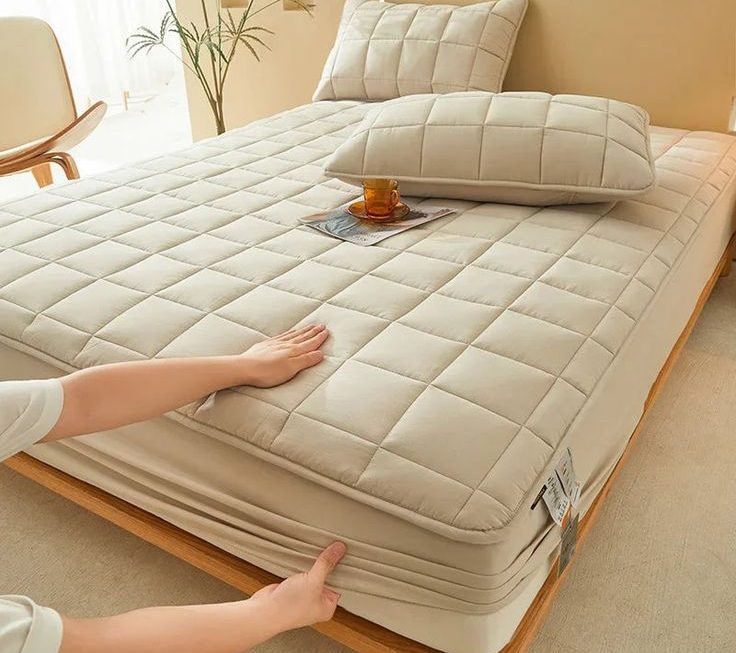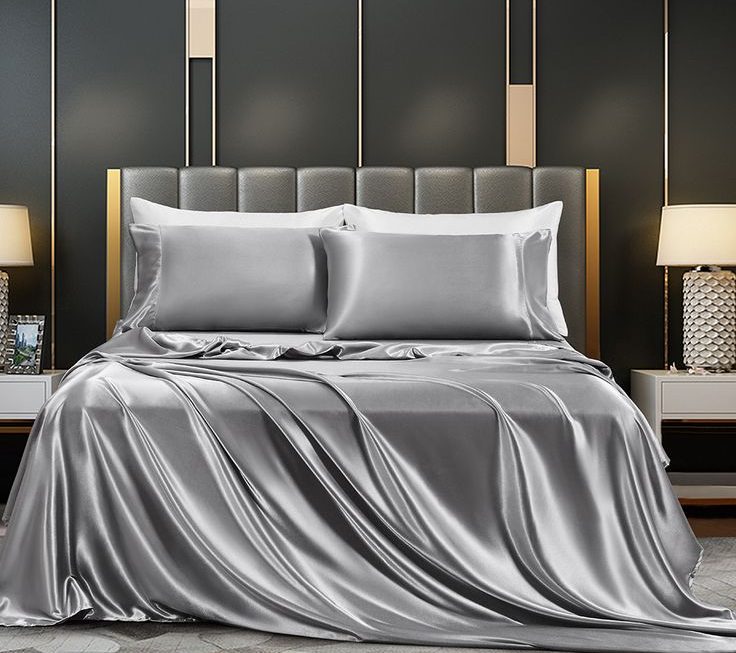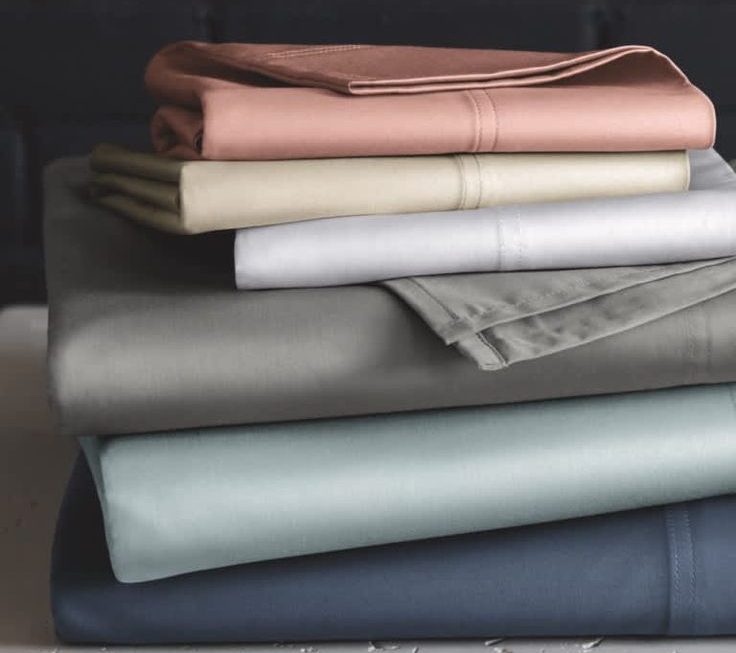 Introduction:
Introduction:
Chair cushions provide comfort and style to any seating area, whether it’s a dining chair, office chair, or outdoor chair. Making your own chair cushions allows you to customize the design, materials, and dimensions to suit your preferences. In this comprehensive article, we will provide a step-by-step guide on how to make chair cushions, including materials needed, sewing techniques, and tips for a professional finish. By following these instructions, you can create unique and comfortable chair cushions that perfectly fit your chairs and enhance your living space.
Materials Needed:
Fabric:
Choose a fabric that is durable, easy to clean, and suitable for the chair’s purpose. Cotton, linen, or outdoor fabric work well for chair cushions.
Foam or Batting: Select foam or batting that provides sufficient cushioning and support. High-density foam or polyester batting are commonly used for chair cushions.
Thread:
Use thread that matches the color of your fabric for a seamless finish.
Scissors:
Sharp fabric scissors are essential for cutting your fabric and foam accurately.
Sewing Machine:
A sewing machine will make the process faster and easier, but hand sewing is also an option.
Measuring Tape:
Use a measuring tape to ensure precise dimensions for your chair cushions.
Straight Pins:
Straight pins will help hold the fabric in place while sewing.
Step-by-Step Guide to Making Chair Cushions:
Step 1: Measure and Cut the Fabric:
Measure the dimensions of the chair seat, allowing for a comfortable overhang.
Add seam allowances of at least 1/2 inch to each edge for sewing.
Use the measurements to cut two pieces of fabric—one for the top and one for the bottom of the cushion.
Step 2: Cut the Foam or Batting:
Use the same measurements as the fabric to cut the foam or batting.
Trim the foam or batting to match the shape of the fabric, if necessary.
Step 3: Sew the Fabric Pieces:
Place the fabric pieces together with the right sides facing each other, aligning the edges.
Pin the fabric pieces together, leaving an opening to insert the foam or batting.
Sew along the pinned edges, removing the pins as you go.
Reinforce the corners by sewing back and forth a few times.
Step 4: Insert the Foam or Batting:
Turn the fabric right side out through the opening.
Insert the foam or batting through the opening, ensuring it fits snugly.
Hand stitch or machine stitch the opening closed using an invisible stitch or a straight stitch.
Step 5: Finishing Touches:
Press the cushion with an iron to remove any wrinkles or creases.
Add any decorative elements, such as piping, buttons, or ties, if desired.
Place the cushion on the chair and adjust as necessary for a perfect fit.
Tips for a Professional Finish:
Take accurate measurements and cut the fabric and foam precisely to ensure a well-fitted cushion.
Use sharp fabric scissors to ensure clean and precise cuts.
Pin the fabric pieces together before sewing to prevent shifting or misalignment.
Backstitch at the beginning and end of each seam for added strength and durability.
Press the fabric with an iron before sewing to create crisp edges and smooth seams.
Consider adding piping or trim to give your chair cushions a polished and decorative look.
Advantages of Making Chair Cushions:
Customization:
Making chair cushions allows for complete customization. You have the freedom to choose the fabric, design, and dimensions that best suit your personal style and the specific needs of your chairs.
Perfect Fit:
Store-bought chair cushions may not always match the exact size or shape of your chairs. By making your own cushions, you can ensure a perfect fit that provides optimal comfort and support.
Cost-Effective:
Making chair cushions can be a cost-effective option compared to purchasing pre-made cushions. You have control over the materials used, which can help you save money without compromising on quality.
Quality Control:
When making your own chair cushions, you have full control over the quality of the materials and construction. You can select high-quality fabrics and foam or batting that ensure durability and long-lasting comfort.
Personalization:
Chair cushions made by hand add a personal touch to your seating area. You can choose fabrics and designs that reflect your unique taste and complement the overall decor of your home.
Creative Expression:
Making chair cushions allows you to unleash your creativity and experiment with different patterns, colors, and textures. It provides an opportunity to showcase your sewing skills and create one-of-a-kind cushions that stand out.
Repair and Refresh:
If you have existing chairs with worn-out or damaged cushions, making new ones gives you the chance to repair and refresh the seating. This can extend the life of your chairs and revitalize their appearance.
Sustainability:
Making your own chair cushions promotes sustainability by reducing waste. You can repurpose fabric scraps or choose eco-friendly materials to create cushions that align with your environmental values.
Overall, making chair cushions offers numerous advantages, including customization, cost-effectiveness, quality control, personalization, creative expression, repair and refreshment, and sustainability. It allows you to create comfortable and stylish seating that perfectly suits your needs while showcasing your creativity and adding a personal touch to your living space.
Disadvantages of Making Chair Cushions:
Time and Effort:
Making chair cushions requires time and effort, especially if you are new to sewing or crafting. The process of measuring, cutting, sewing, and finishing can be labor-intensive and may require patience and attention to detail.
Skill Requirement:
Making chair cushions requires basic sewing skills and knowledge of sewing techniques. If you are not familiar with sewing or do not have access to a sewing machine, it may be challenging to achieve professional-looking results.
Equipment and Supplies:
To make chair cushions, you need access to a sewing machine, fabric scissors, measuring tools, and other sewing supplies. If you do not already have these items, there may be an additional cost associated with acquiring or borrowing them.
Limited Design Choices:
While making your own chair cushions allows for customization, it also means you are limited to the selection of fabrics and designs available to you. Finding the perfect fabric or trim may require more time and effort compared to buying pre-made cushions with a wide variety of options.
Upholstery Expertise:
If you want to create more elaborate chair cushions with advanced upholstery techniques, such as tufting or piping, it may require additional knowledge and skills. This could pose a challenge for beginners or those without experience in upholstery.
Durability and Longevity:
The durability and longevity of handmade chair cushions may vary depending on the quality of materials used and the construction techniques employed. If not made with high-quality materials or if not sewn securely, the cushions may experience premature wear and tear.
Lack of Warranty or Return Policy:
Unlike purchasing pre-made cushions from a retailer, making your own cushions means you do not benefit from a warranty or return policy. If you are unsatisfied with the final result or encounter any issues, you bear the responsibility for any necessary repairs or replacements.
While making chair cushions offers many advantages, it is important to consider the potential drawbacks. Time, effort, skill requirements, limited design choices, upholstery expertise, durability, and lack of warranty or return policy are factors to consider before deciding to make your own chair cushions. Assess your sewing abilities, available resources, and desired outcome to determine if making chair cushions aligns with your capabilities and preferences.
Conclusion:
Making your own chair cushions allows you to personalize your seating area while ensuring comfort and style. By following this comprehensive guide, you can create custom chair cushions that perfectly fit your chairs and complement your home decor. Remember to gather the necessary materials, measure and cut the fabric and foam accurately, sew the fabric pieces together, and add finishing touches for a professional result. With a little time and effort, you can enjoy unique and comfortable chair cushions that reflect your personal style and enhance your living space.






